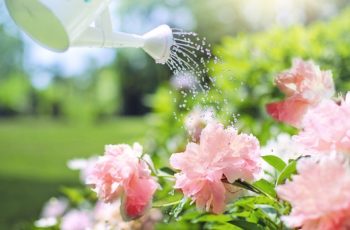With their gorgeous, showy blooms and delicate fragrance, peonies are one of the most beloved perennials. Peonies are also relatively easy to grow and care for and can thrive almost anywhere in the country.
Once established, a happy and healthy peony can live for 50 years or more, providing enjoyment for generations.
Whether you’re new to the art of gardening or you have a green thumb, learn how to achieve beautiful blooms from the following peony care guide.
Best Practices when Planting Peonies
Peonies grow well in cooler climates (USDA zones 3-8) and prefer sunny locations with rich and well-drained soil. Some peonies can survive in warmer climates if the plants receive shade during the hottest part of the day.
Barefoot peonies should be planted between late fall and early spring, except when the ground is frozen.
To plant your peony, dig a hole the appropriate size for the type of peony, adding compost and an all-purpose fertilizer to your hole. A good rule of thumb is to plant your peony at the same level it is in the nursery container.
Be careful not to plant your peony too deeply—the “eyes” of the peony should be no more than 2 inches below the surface of the soil, or it may not produce any flowers during its bloom sequence.
Keep in mind that newly planted peonies rarely bloom the first year, though. It often takes two to three years after planting before peonies produce any flowers, so don’t be discouraged.
Related: The Best Flower Bed Ideas for the Front of Your House
How to Care for Peonies
Peony care is relatively straight-forward. Peonies generally need heavy, infrequent soakings and little fertilization. Let the rain water your peony unless you are experiencing an atypically dry season. In this case, give your peony a healthy soaking once a week.
Be mindful not to overwater, however, as peonies do not like wet feet and are rather drought resistant.
Consider feeding your peony with a low-nitrogen fertilizer when shoots emerge in the spring and again after the plant has bloomed.
Most gardeners recommend stalking peonies with tomato rings or fencing to support the heavy blossoms in the spring. It is usually not a good idea to mulch peonies as they need the frost to flower. If you choose to mulch your peony, however, it is important to keep the mulch away from the base of the plant or it may fail to bloom.
Preventing Disease in Your Peonies
Peonies are robust plants that suffer from few pests and diseases, but a fungal disease called botrytis could develop in especially wet seasons.
If the foliage on your peony has blackened or browned and wilted, you should remove the affected flower parts and petals promptly.
Peonies need good drainage and adequate air circulation for healthy growth, so it is important to avoid overwatering and to provide your peony with space to grow.
Peonies are also susceptible to powdery mildew, which is best diminished by providing sufficient air circulation and ample sunlight.
Winter Peony Care
Peonies are hardy plants that demand little care during cold winters. In fact, for the best bloom, peonies require a period of winter chilling while they are dormant.
Fall cleanup of peonies involves cutting back and removing any debris and foliage to discourage overwintering of pests.

